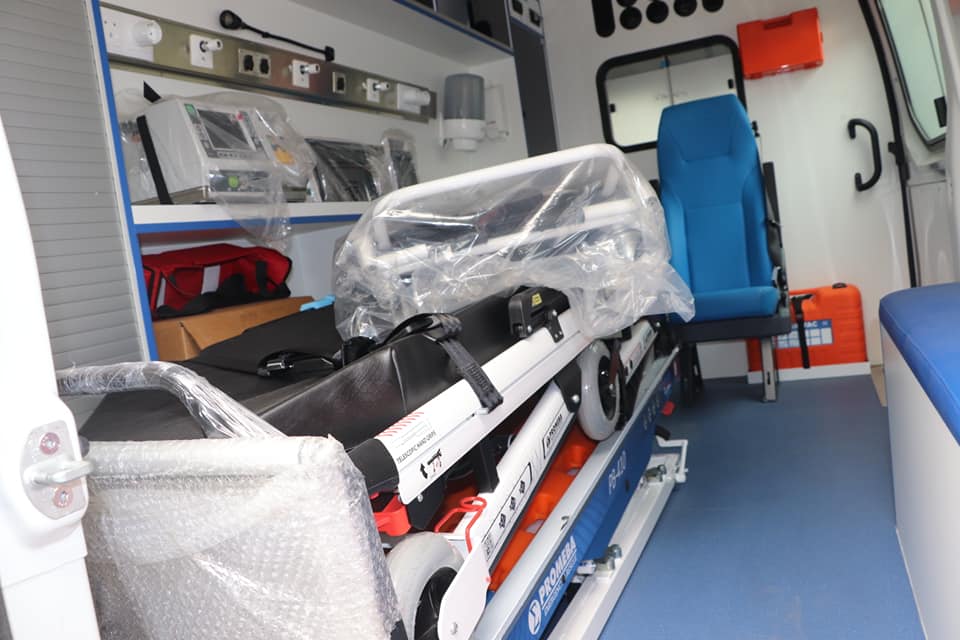By Isaac Atunlute
When floodwaters swept certain areas of Nigeria in early July 2025, a decision to improve emergency management capacity by the National Emergency Management Agency (NEMA) was hailed as historic.
Three zonal offices in Kaduna, Imo, and Akwa Ibom States received mobile intensive care unit (MICU) ambulances.
This followed a vulnerability assessment that had found deficiencies in essential equipment in those areas.
As flash floods become more frequent due to climate change, this action represents an essential intervention to save lives, the agency said.
Its MICU ambulances are no ordinary ambulances. They are equipped with advanced emergency medical tools, including oxygen supply systems, patient monitoring devices, suction kits and life-support systems.
These features assist in stabilizing patients en route to hospitals, a valuable asset in flood emergencies when roads are often submerged and hospitals congested.
NEMA said this strategy is part of a broader commitment to build a more robust disaster preparedness framework nationwide.
The deployment was not random. It followed the identification of high-risk flooding areas based on weather information published by the Nigerian Meteorological Agency (NiMet).
NiMet had already issued a flash flood warning, listing Sokoto, Kaduna, Zamfara, Yobe, Bayelsa, Benue, and several other states as most vulnerable.
With climate forecasts predicting heavier-than-usual rainfall and more flash floods, NEMA’s decision to deploy MICUs to these locations shows a shift toward anticipatory action rather than reactive disaster response.
But ambulances are only one part of the equation.
NEMA has also been running flood simulation drills, stakeholder workshops on coordinating, and public sensitisation exercises in states.
It’s all about ensuring that one can respond right away to disasters and strengthening inter-agency coordination at the state and local levels.
The agency’s approach now mirrors global best practices in disaster risk reduction, integrating real-time medical response with public education and logistics.
This kind of initiative builds on lessons from previous emergency responses, such as the one offered in 2024 when the Alau Dam in Borno state collapsed, triggering devastating deaths.
In that instance, NEMA led rescue and relief operations, including deploying mobile clinics to IDP camps and providing clean water through dispatched water trucks. Boats were also used to aid evacuation efforts.
While those efforts were temporary, NEMA’s 2025 approach is more structured and institutional in its operational system. The Mobile ICU ambulances are now part of permanent infrastructure for emergency response.
To effectively restructure Nigeria’s disaster management system, NEMA’s MICU deployment can also be expanded.
Additional high-risk areas can have more MICUs deployed, and emergency first-response courses can also be conducted for regional medical personnel.
Rapid medical units can also be included in communities that are subject to flooding so that they can respond more immediately.
Such improvements, if conducted for all regions, would make NEMA’s strategy a long-term resilience program rather than a crisis solution.
As Nigerians living in states like Ondo, Delta, and Cross River continue to battle flooding and call for support, interventions like this are no longer optional. They are essential.
With increasing rainfall and limited access to rural healthcare, on-site medical readiness could mean the difference between life and death.
NEMA’s MICU deployment may not make front-page headlines, but it represents a change in how Nigeria responds to its most dangerous natural threats.
When disasters strike, preparedness must arrive before the waters do, and with this step, NEMA has brought help closer to where it’s needed most.
In response to the flooding in Nigeria in July 2025, the National Emergency Management Agency (NEMA) has taken historic steps to improve its emergency management capacity.
This has included deploying mobile intensive care unit (MICU) ambulances to high-risk areas identified via a vulnerability assessment and weather information.
These ambulances are equipped with advanced medical tools to stabilize patients during flood crises when hospital access is difficult due to submerged roads and congestion.
This move is part of a broader strategy to enhance disaster preparedness across the country.
Besides deploying MICUs, NEMA has been proactive in running flood simulation drills, stakeholder workshops, and public education and sensitization exercises, aiming to enhance immediate disaster response and improve inter-agency coordination. This anticipatory approach mirrors global best practices, combining real-time medical responses with public education and logistics, and builds on lessons from previous emergencies, such as the 2024 Alau Dam collapse.
NEMA's initiative aims to institutionalize its emergency response system and transform the disaster management framework into a long-term resilience program. This includes potential deployment of more MICUs and training courses for regional medical personnel to effectively tackle the increasing frequency of floods. The initiative is crucial as continued flooding significantly impacts communities, making preparedness essential to mitigate the nation's most dangerous natural threats.






